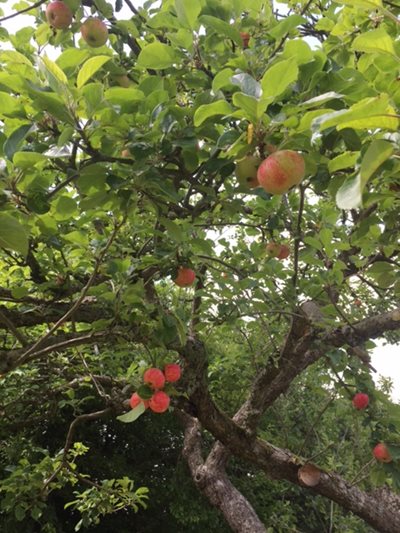Everybody seems to love an orchard: they tick all the boxes in terms of conservation. Like ancient woods or hedges, orchards lie at that fascinating interface of history and natural history, of nature and culture. And, whether laden with fruit in late summer, or bright with blossom in the spring, they have a strong aesthetic appeal. Orchards, and especially those managed on more ‘traditional’ lines - with tall trees and minimal use of herbicides - are an important wildlife habitat, a fact recognised by their definition in 2008 as a UK BAP (Biodiversity Action Plan) habitat. They have a rich grass sward, are often surrounded by a band of scrub in the form of hedgerows – and above all have their trees, providing (in the best examples) an important reserve of dead wood as well as an abundant source of nectar. Rare fungi, wood-boring insects like the noble chafer, wild flowers, lichens and epiphytes all thrive in these diminutive wood-pastures. But their numbers have fallen catastrophically over recent decades.
We are currently recruiting volunteers to help record orchards - everyone is welcome and you don’t need to be an orchard expert!
Orchards East is a new initiative, funded by the Heritage Lottery Fund and based at the University of East Anglia. We are cooperating with a wide range of partners, such as the East of England Apples and Orchards Project and the county Wildlife Trusts, across the six counties of eastern England (Norfolk, Suffolk, Essex, Hertfordshire, Cambridgeshire – and Bedfordshire). We aim to record and research old orchards, to conserve existing examples and create new ones, as well as to provide people with the appropriate practical skills that are needed to ensure that orchards can be maintained into the future.

One important part of this project is to map, and understand the history of, surviving orchards – both ‘traditional’ examples, attached to old farmhouses; and more recent examples, for even these, if long-established or neglected, can contribute significantly to biodiversity. Our programme of recording and research will be carried out in cooperation with local volunteers, who will seek out existing orchards – or the remains of orchards – in their local area, and perhaps research their history at local record offices. Subsequent, more detailed, surveys of selected examples will assess their wildlife significance. We are particularly interested in knowing the extent to which the presence of particular epiphytes, fungi or saproxilic insects is simply related to the antiquity of the individual trees present within an orchard, and how far to the age of the orchard site itself.
We are currently recruiting volunteers to help record orchards (everyone is welcome and you don’t need to be an orchard expert!), and – ultimately – the kinds of wildlife found within them. The project is being rolled out gradually across eastern England over the next few months, on a county-by-county basis, and our Norfolk launch will take place at the Green Britain Centre at Swaffham on 4 November 2017.
If you are interested in attending – or are unable to attend, but keen to be involved - then please contact the Project Manager,
Rachel Savage. Or take a look at the website
www.orchardseast.org.uk